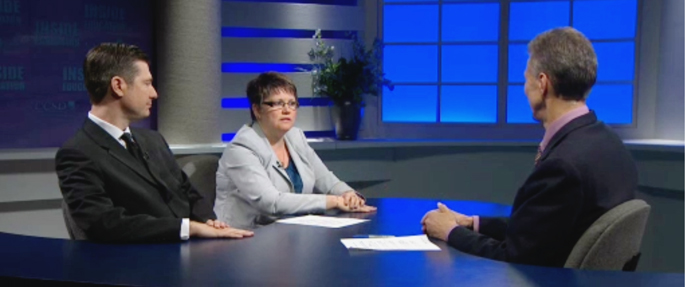It’s not always easy for districts and teachers’ unions to get along. But there are more than a few places where good work is happening through collaboration, even on tricky issues. They are rarely written about. What newspaper editor, after all, sends a beat reporter out to cover the absence of conflict? Here’s one such example.
A little more than a year ago, when TNTP began working in Las Vegas (home to Nevada’s Clark County School District, or CCSD), that was certainly the case. The district was in the middle of one of several arbitrations with the teachers union, the Clark County Education Association (CCEA), over salary and benefits. Salary freezes, bumps in pay for advanced education credits and layoffs had all been necessary to balance the budget.
As you can imagine, the two sides were not on the best terms. Some harsh words were exchanged, in public and in private. So when it came time for CCSD to comply with a two-year-old state law and significantly change its evaluation system for teachers and school leaders, I prepared myself for rough waters.
But in most ways, it’s been pretty smooth sailing. The relationship between the district and the teachers’ union has been one of collaboration, instead of conflict.
It turned out that the union and district shared a lot of common ground—or at least, that’s what they chose to focus on. They both agreed that the current evaluation system was broken and meaningless, because it lacked coherent standards of excellence and didn’t include opportunities for the sort of meaningful, regular feedback that can help teachers reach their full potential. Instead of arguing about hypothetical outcomes of a yet-to-be-designed system, they concentrated on analyzing the relative strengths and weaknesses of the current system. And both parties found lots of room to improve.
Better yet, they were willing to come out in public as partners instead of adversaries. Former Clark County superintendent Dwight Jones and the teachers’ union president co-authored an opinion piece on the issue, detailing the flaws of the current system and describing why overhauling evaluations for both teachers and school leaders made sense. In addition, over a period of several months, they co-hosted (yes, as in the same room, side-by-side) a series of information sessions and town halls to help teachers understand the state’s new evaluation framework. This public display of solidarity made clear that the new evaluations were not something being done to teachers by administrators; but rather, were the product of genuine labor-management collaboration.
The question is, why? Unions are generally savvy and have their and their members’ interests at heart. So it must be the case that here, strong evaluations were seen as in the interest of the district and the union.
I see a few seemingly unrelated factors that might be at play. The teachers’ union recently stepped up its focus on professional development, one of several strategies that appear designed to shore up membership. There’s a bright line linking professional development and the new evaluations, which the union has characterized as a way to help teachers improve, and taken on as a co-owner. That’s not a bad way to show teachers that their union can be an important player in something that will have a major impact on their working lives.
Out of the blue in March, Jones unexpectedly resigned. Such a transition would seem the perfect excuse for progress to stall—and in lots of places, it would have. But just a few weeks after his resignation, a district leader appeared alongside a teachers’ union representative on television to discuss their strong collaboration and the future of teacher evaluation. Then, another positive sign: the new superintendent, Pat Skorkoswky, named teacher evaluations one of his key focus areas as the district prepares to pilot the state’s new evaluation framework next school year.
The real challenge still lies ahead, as teachers union and district leaders in Clark County move from talking about evaluation in general to actually making hard choices about what the new system will look like in detail.
Then comes implementation. CCSD and the CCEA will have to roll with whatever difficulties inevitably emerge, which presents another risk that cooperation may break down.
But I am optimistic. Things have already gotten off to a positive start, and the relative strength of the relationship should help smooth the way. Clark County has weathered a tough transition, in part, I think, because the message is simple and resonates with teachers, union leaders and district officials alike: Giving teachers meaningful feedback on their classroom practice, which is critically important to student learning, ultimately is also what teachers deserve.








